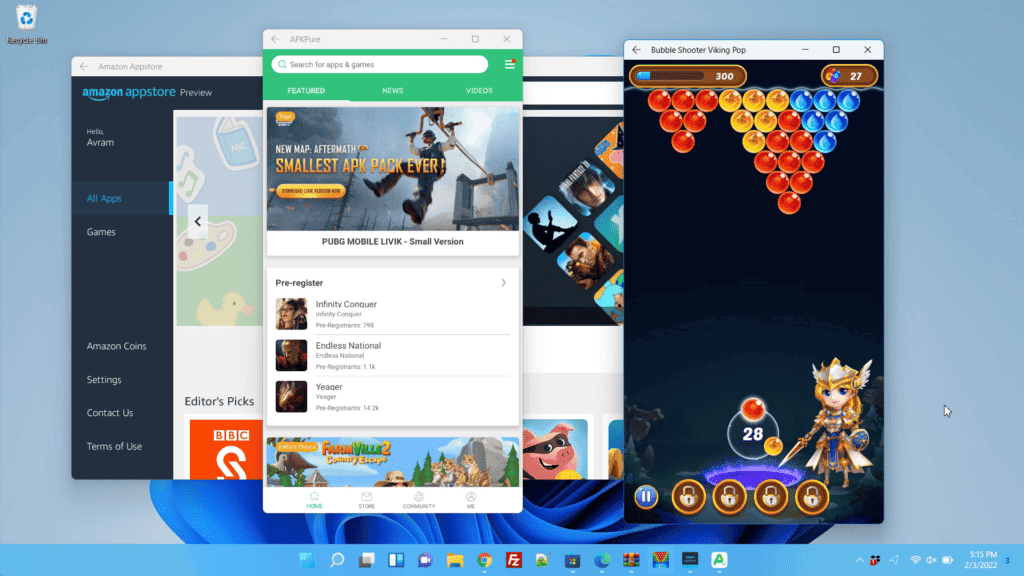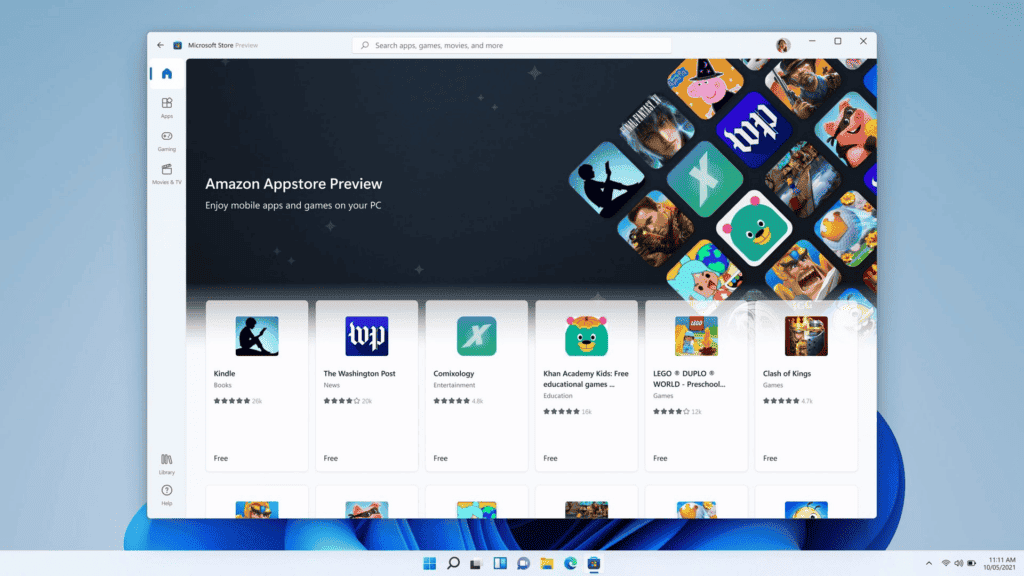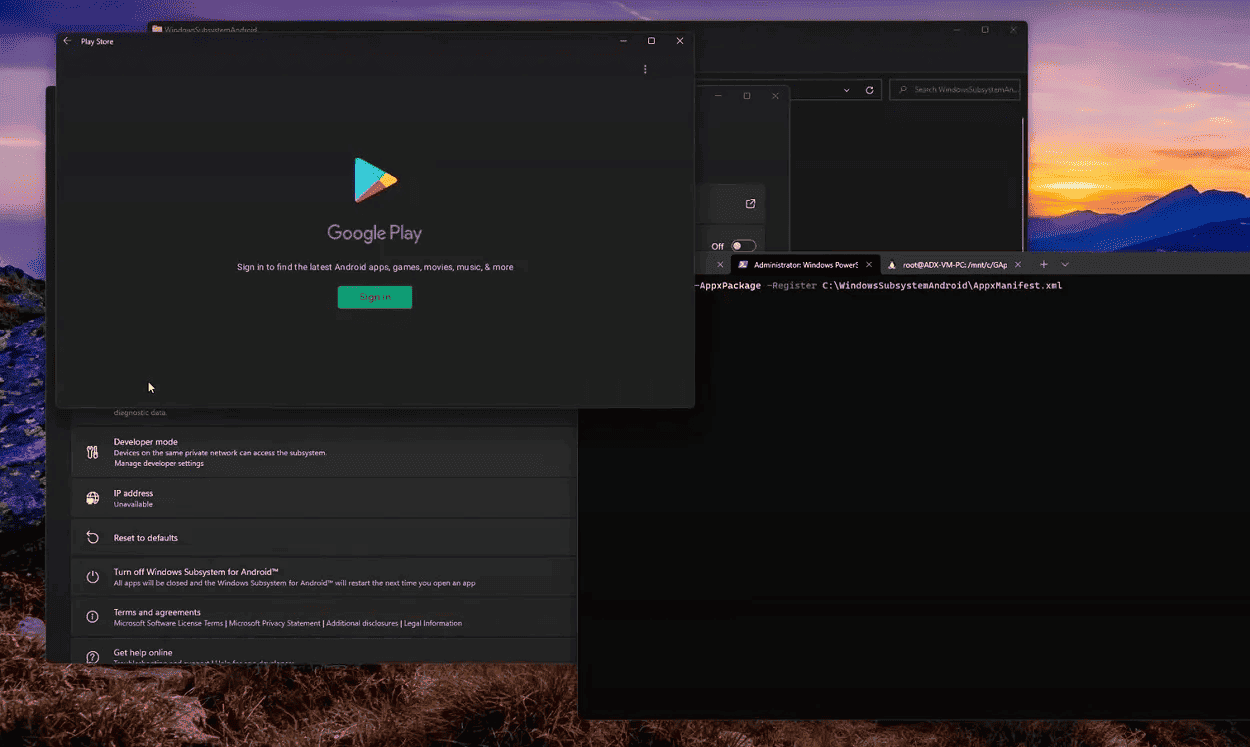Microsoft has been trying for years to offer an alternative to Android and iOS with its Windows Phone. Although Windows Phone managed to win over some fans around the world with its unique visuals and features, Microsoft decided to eventually bury all the investments made in the operating system. Instead of fighting them, the company decided to “join” them, or rather put itself in these OSes. Today, the company offers some of its apps and services on Android, and to attract Android users to its ecosystem, it offers compatibility with Android apps on Windows 11.
With the latest Windows 11 updates, Microsoft is finally allowing non-developers to install Android apps on their PCs. Since the Google Play Store cannot be installed on Windows 11, the process of installing Android apps happens thanks to a partnership with the Amazon Appstore. To install Android apps, you’ll need to set up the Windows Subsystem for Android if it’s not already available on your PC. The next step is to install the Amazon Appstore app and enable virtualization. In this guide, we will teach you how to install Android apps on your Windows 11 PC. This is quite useful if you are an experienced PC user and are not satisfied with the web versions of certain apps.
Imagine having the mobile Instagram experience on a Windows PC. As you may know, the Instagram network limits its functionalities. Also, you can bring some apps that are exclusive to mobile devices like a shipment tracking app, etc. In this article, we’ll teach you how to set up the Android subsystem and start installing apps on Windows 11. Obviously, playing Android apps on Windows has been possible for years, but unofficially thanks to emulators like BlueStacks. However, in this article we will talk about natural support.
How to install Android apps on Windows 11
To install Android apps on Windows 11, you’ll need the Amazon App Store and the Windows Subsystem. You should already have the Windows Subsystem for Android if you’re using one of the latest Windows 11 updates. But in case you don’t, you can download it again from the Microsoft Store. Note that it may not be compatible with your device if you are running Windows 11 unofficially. Download it again from the Microsoft Store.
Stage 1: Open the Microsoft Store using Windows + S keys and search for “Microsoft Store”.
Step 2: Search for “Amazon Appstore” and select the app. If it doesn’t show up for you, your device might not be compatible.
Step 3: Choose Take it.
Step 4: You may need to enable virtualization on your computer at this point. Windows 11 can do this automatically, as well as set up the Windows Subsystem for Android if you don’t have it installed. You will see a prompt, select Setup >> Download >> Next >> Restart. Follow the Microsoft Store prompts. You will need to restart your computer.
Step 5: After your PC finishes rebooting, the Windows Subsystem for Android will appear and then the Amazon Appstore app will open automatically after that.
Step 6: Sign in to your Amazon account (or create a new one). Start downloading Android apps on Windows.

It’s worth noting that you’re limited to the Amazon Appstore on Windows 11. Some apps may not be available from there. However, there is still a long list of apps that you can download from the app. For example, TikTok is a possibility here. If you want to explore beyond the Amazon App Store, it is also possible to sideload Android apps on Windows 11. However, these are not supported and you will have to proceed at your own risk.
How to sideload apps on Windows 11
As you learned, Windows 11’s official support for Android apps means you’ll be installing apps through the Amazon App Store. However, that doesn’t mean you can’t install apps in unofficial ways. Well if the support is there you can install anyway try installing apps via sideloading then. While the Amazon App Store is good and has some of the most popular apps, it still accounts for less than a quarter of the apps you can download if you download from the Google Play Store.
There is a solution in the form of WSATools. This is a utility created by engineering student Simone Franco. It not only allows you to install any Android app, but also makes the process much easier than usual. Without the tool, the process requires multiple downloads from different sources, a lot of setup, and some command line time.
Gizchina News of the week
Sideload apps with WSATools
WSATools will do most of the complicated steps in the background. Once you boot it, it will automatically install the Android Debug Bridge (ADB), which is essential for sideloading apps. It will then ask you what Android app you want to install. The process is as seamless as installing Android apps on the Amazon App Store. Fortunately, most Android apps will work just fine, even if they’re just APK files—the file extension associated with Android apps. It is important to note that performance when sideloading apps cannot be guaranteed.

The first thing you need to know is that sideloading is an unofficial installation. Therefore, not all applications will have perfect functionality. Also, some apps are exclusive to smartphones and the PC experience may not be the best. Some applications will not perform as well as they would on the original hardware. Also, this is all experimental, so don’t expect developers to work on fixes for apps if they don’t work properly on Windows 11.
Be careful when sideloading Android APKs. Make sure you avoid shady websites and download APKs from websites like APKMirror. This is one of the most reliable options as the site does not host any pirated or paid apps. Cross-checks immutable APK certificates to verify that apps are legitimate. Also, sideloading carries risks regardless of the installation method or APK source.
If you are wondering whether or not it is possible to install Google Play Store on Windows 11, we can say that it is!
How to install Google Play Store on Windows 11
If you are not happy with the Amazon Appstore catalog and can’t deal with sideloading apps, then installing the Google Play Store is an option. Apparently it is not officially available and you will have to go through some steps.

Requirements for Google Play Store on Windows 11
- To install Google Play Store on Windows 11, you first need Amazon Appstore on the system. Refer to the beginning of this article to check the steps.
- Also, be sure to check that your PC meets Windows 11 requirements and install all the latest updates before starting the process.
- Check if your Microsoft Store is updated to the latest version.
- Check if your Windows 11 PC has hardware virtualization enabled. To do this, go to the “Performance” tab in the task manager with Ctrl + Shift + Esc. If it is not enabled, then you need to enable Intel VT-X in your computer’s UEFI firmware (BIOS).
- Once everything is checked, you can proceed to the steps.
How to install Google Play Store on Windows 11
- Stage 1: To download and install Google Play Store on your Windows 11, you need a tool called “PowerShell Windows Toolbox”.
- Step 2: To download Google Play Store, visit the GitHub page and download the dedicated tool in that connection.
- Step 3: Scroll down the How to Use tab and then copy the code under the “Easy Launch Command” option.
- Step 4: Now run Windows Powershell on your computer as administrator. To do this, go to the start menu, search for the tool, and then press “Run as administrator”.
- Step 5: You need to paste the previously copied code into PowerShell and click Enter.
- Step 6: Wait for a few seconds and click on the “Install Google Play Store for Windows 11” option available at the bottom of the page. This will replace the Windows Subsystem for Android with a new package. Type “P” to continue.
- Step 7: Here you will get a new bit.ly link that you can copy and paste into your browser to download a ZIP file. Once downloaded, enter the file path in PowerShell.
- Step 8: Once it’s all done, you’ll find the Google Play Store in the Start menu with your other apps. Now you can sign in with your Google account on the Play Store and enjoy the apps downloaded from it on your Windows 11.
Most of the apps should work fine, but you may still find some incompatibility issues. It will be hit or miss and you need to check which apps are working or not working on your PC.
Conclusion
As you can see, it is quite possible to run Android apps on Windows 11 PCs running the latest versions. Although it was only available to insiders in the release, support has been added to all users in recent updates. Of course, if your computer is not compatible with the Android subsystem, then the Amazon AppStore will not appear on your computer. You may also have problems trying to install other stores. If the subsystem is not compatible with your Windows 11 PC, then you will have to look for Android emulation apps.

